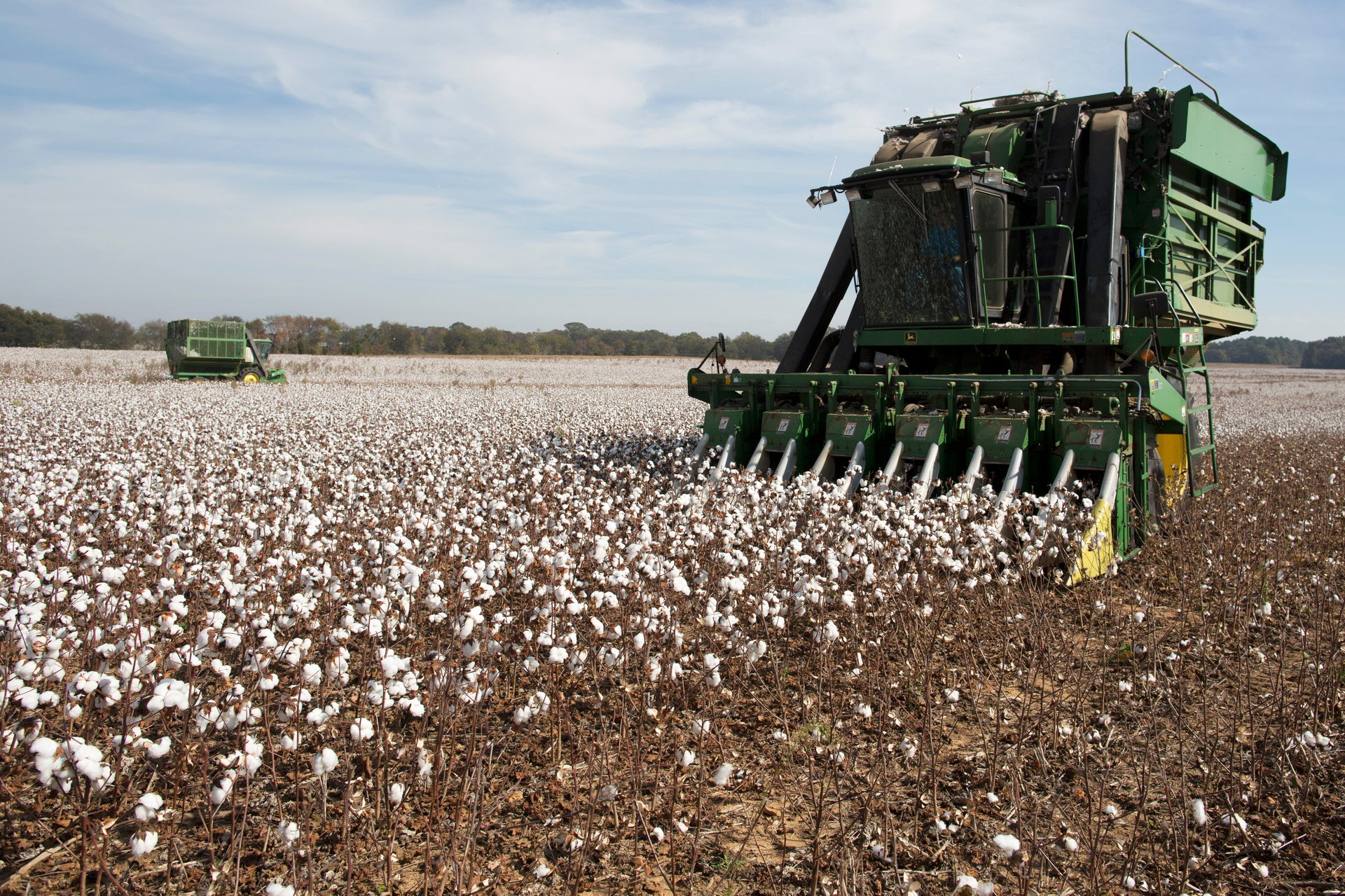Your organic cotton t-shirt might be worse for the environment than regular cotton
The word “organic” is a powerful marketing tool. In clothing—just as in food—brands love to tout their use of organic agricultural products to show they’re doing their part to fight the industry’s outsized environmental footprint. They know consumers want products they believe are better for them and the planet. “Organic,” which generally means something was grown without synthetic additives or pesticides and wasn’t genetically modified, seems to promise as much.


The word “organic” is a powerful marketing tool. In clothing—just as in food—brands love to tout their use of organic agricultural products to show they’re doing their part to fight the industry’s outsized environmental footprint. They know consumers want products they believe are better for them and the planet. “Organic,” which generally means something was grown without synthetic additives or pesticides and wasn’t genetically modified, seems to promise as much.
But the reality isn’t always so simple. Your organic cotton t-shirt may have actually used up more resources to produce than one made of conventionally grown cotton, and could have a greater overall impact on the environment.
One major reason, as various speakers pointed out at a May 23 panel held by Cotton Inc., a research group that serves the cotton industry, is that conventional cotton varieties have a higher yield, meaning a single plant will produce more fiber than its organic counterpart. That’s because conventional cotton has been genetically engineered for that purpose. In the past 35 years, cotton yields have risen 42% (pdf), largely due to biotechnology and better irrigation techniques.
Organic cotton, by definition, comes from plants that have not been genetically modified. Because of that difference, to get the same amount of fiber from an organic crop and a conventional crop, you’ll have to plant more organic plants, which means using more land. That land, of course, has to be tended and irrigated.
It will take you about 290 gallons of water to grow enough conventional, high-yield cotton to produce a t-shirt, according to Cotton Inc. To grow the same amount of organic cotton for a t-shirt, however, requires about 660 gallons of water. The disparity is similar for a pair of jeans. (It’s worth noting that Cotton Inc., a not-for-profit group, works to help boost the industry’s demand and profitability—though it insists any claim it makes must be vetted by its legal department and the US Department of Agriculture.)
It’s common to see the claim that organic cotton actually requires less water over time, in large part because soil with more carbon from organic matter stores water better. But generally a cotton plant requires the same amount of water whether it’s organic or not, and non-organic farmers also use plenty of methods to keep their soil healthy.
The main environmental concern with water use relates to irrigation, especially in countries such as India, struggling with water scarcity. But about half of cotton crops globally—organic and conventional—get their water from rainfall, according to Cotton Inc. The most water-efficient option is that rain-fed cotton, but there’s no way to know whether the cotton in the t-shirt you’re buying was that variety, or whether it required additional water.
What’s most important, according to Dr. Jesse Daystar, director of the center for sustainability and commerce at Duke University, is efficiency. “Organic, all-natural is not always better,” he said at the Cotton Inc. event. ”It’s really about maximizing your product per amount of inputs.”
The lower yields of organic crops have even been linked to higher greenhouse-gas emissions on the industrial farms producing them. And how far cotton travels before it winds up in your closet should factor into the environmental equation too. India grows the great majority (pdf) of the world’s organic cotton, and the US is probably (pdf) the biggest organic-cotton consumer. Meanwhile, Sweden’s H&M, which manufactures much of its clothing in Asia, has been labeled its top user. (Of course, conventional cotton also can be—and often is—sold far from where it was grown.)
Where organic cotton may have an advantage is in using fewer chemicals. It still uses chemicals, just naturally derived ones, which advocates say are less harmful—though there’s some evidence to suggest that certain organic pesticides can be worse for the environment than conventional ones. But particular chemicals used in conventional farming have raised serious concerns, such as glyphosate, a widely used herbicide that’s the key ingredient in Monsanto’s Roundup weedkiller brand, which the World Health Organization has deemed a “probable carcinogen” based on studies of workers who used the product. (There’s no evidence to suggest that wearing clothing made from cotton grown with the chemical is harmful.)

Environmentally conscious shoppers should also be aware that how their cotton is grown isn’t the only question to ask. Before that organic cotton garment can make it to a store, it must be dyed and finished—one of the dirtiest and most chemically intensive steps in making clothes. Unless your organic-cotton garment is certified under a program such as the Global Organic Textile Standard, it is near impossible to guess whether the dyeing processes used were organic or not.
What’s a shopper to do? The best bet is stick to this simple ethos: Buy better clothes. Buy less of them. Wear them more. There’s no more certain way to reduce your impact than to reduce the amount of clothes you consume and to keep those clothes for a long time. Just try to wash to them only as needed. Laundry uses a lot of water and energy, too.
Image by Otota DANA on Flickr, licensed under CC-BY-2.0. Photo has been cropped.